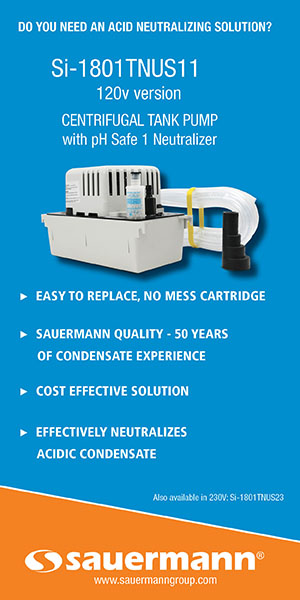“I’m fairly new to HVAC and building science,” Rogers adds. “With my background, I already had cut my teeth measuring airflow and pressure. That knowledge became very useful when I came to The Energy Conservatory. I started working here in 2015 as the engineering and operations manager.”
According to Rogers, the most significant change for TEC is the big push into HVAC. He attributes the beginning of that push to a conversation with TEC Marketing Director Frank Spevak a few weeks after coming to work for TEC.

“Spevak showed me all the products TEC offered, including the TrueFlow® Grid. He told me that if TEC could make this product less expensive and more intuitive, many more HVAC contractors would use them.
“I later learned what the TrueFlow was about and how many HVAC super nerds really liked the product.”
Technology Nerds
The one thing Rogers emphasized during our conversations was the very deep knowledge of building science and blower testing that hails back to the company’s beginning. He says that deep understanding came from founder Gary Nelson who, in Roger’s words, is “one of the foremost experts in measuring small pressures in the country.”
He adds, “That’s important because you must measure small pressures for a blower test. The company developed a product called The TrueFlow® Grid to do just that: measure small pressures.
“That knowledge and knowing what instruments to use is a key part of our reputation. Technology nerds appreciate this about us. They also appreciate our reliable equipment and customer service when something doesn’t go the way they want.”

industry. He recently teamed up with HVAC School to do a
podcast on the importance of measuring total system airflow.
He also adds that in the early days, the propensity to be nerdy made TEC products intimidating to many energy raters and HVAC contractors. The company needed ways to simplify things to broaden its appeal.
TEC developed the new Digital TrueFlow grid to be easier to use – and at a lower price! They also released a free mobile app to work with the updated TrueFlow.
Now users can not only make better measurements, Rogers says that they also get insight into how the HVAC system is performing and potential actions that should be taken based on the measurements.
“Now, the app not only helps when you measure airflow, but it interprets the data and gives you visual ranges: green, yellow, or red flags that tell the contractor the airflow quality,” he adds. “Is it too low or too high? Or is it red, and the contractor needs to fix something?”
Connecting to the HVAC Community
Rogers adds that the need to build reputation in the HVAC Industry came after product development. “We were known for being a bit too nerdy, too esoteric, and for not always focusing on the practical things,” he explains.
“We need more street credibility among HVAC contractors and technicians,” he says.
A key step in building a connection to the HVAC community was hiring Chris Hughes to the TEC Team, according to Rogers. Hughes began his carer as an HVAC contractor, having started Hughes Mechanical in Louisiana many years ago. Rogers says Chris’ interest eventually became focused on the building science side of things.
“Chris is passionate about learning more about how building science and HVAC work together to make the house the system. When he decided to leave the family business and join TEC, he brought the experience and knowledge we needed to truly understand the daily life of HVAC contractors and technicians.
“Chris has helped TEC connect with the HVAC community. Our goal is to help contractors do better business, win more jobs, and make it easier for them to justify the work that is needed. And that community is a key part of delivering better built environments and to the future of TEC.”
Training Is Critical
In Roger’s opinion, testing and measuring are central to building science and HVAC. Teaching people how to test and measure and what tools are best for doing that is essential.
Click Below for the Next Page:













Recent Comments